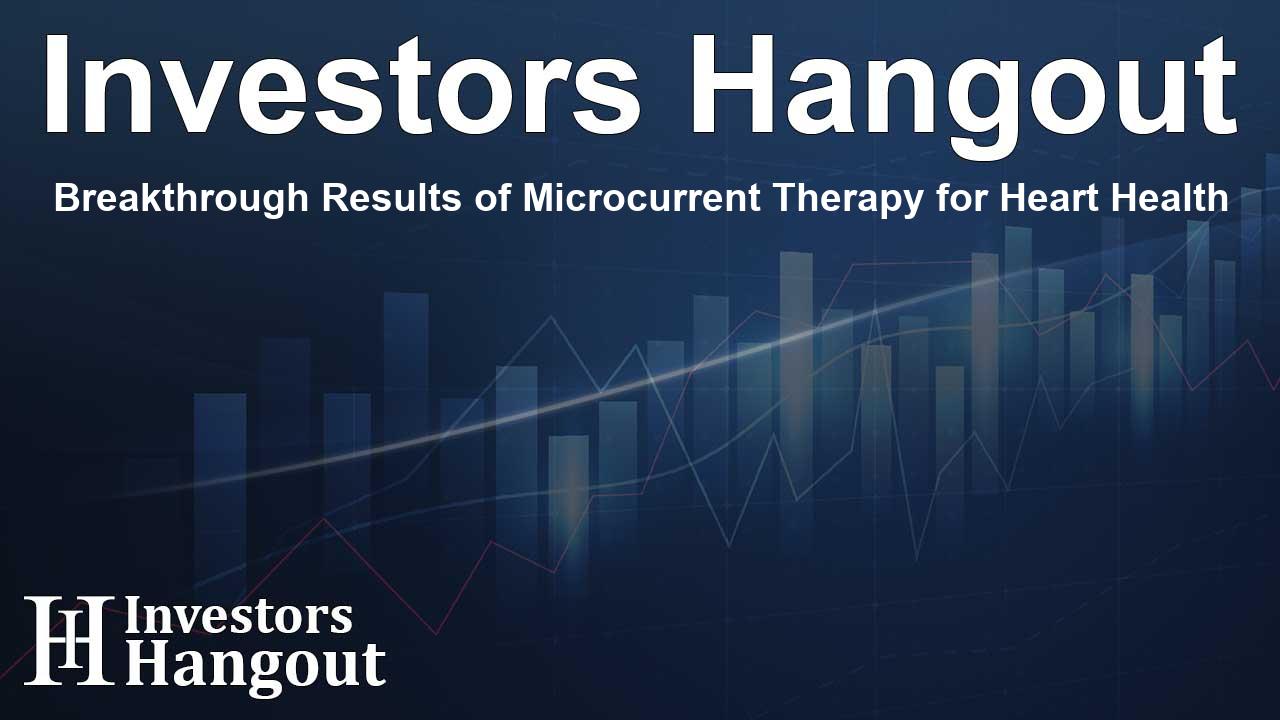Breakthrough Results of Microcurrent Therapy for Heart Health

Promising Advances in Microcurrent Therapy for Heart Failure
Exciting developments have emerged regarding the application of microcurrent therapy in treating patients with heart failure. Recently, the results of a notable trial were unveiled, presenting strong evidence on the efficacy of the Cardio-Microcurrent (C-MIC) device. This innovative technology is designed specifically for delivering low-intensity microcurrent directly to the failing heart muscle, representing a significant leap forward in bioelectronic medicine.
Understanding the C-MIC II Trial
The C-MIC II trial explored the outcomes of this therapy in a randomized controlled study setting. In total, 70 ambulatory patients suffering from non-ischemic dilated cardiomyopathy were selected, with a left ventricular ejection fraction (LVEF) ranging from 25 to 35%, alongside symptoms classified under NYHA Class III–IV. These individuals were divided into two groups: one receiving C-MIC therapy alongside standard medical treatment, and the other receiving only standard medical treatment.
Key Study Findings
After a six-month period, the results showcased substantial improvements among those receiving C-MIC therapy. The LVEF increased, on average, by 6.6% in the C-MIC group compared to just 1.5% in the control group. This marked a significant mean difference that emphasizes the therapy's potential in improving heart function. Moreover, clinical assessments revealed that 84% of patients treated with C-MIC improved by at least one NYHA class, which stood in stark contrast to the mere 15% in the control cohort.
Functional Outcomes and Quality of Life Enhancements
The advantages of C-MIC therapy were not confined to mere heart function. Quality of life assessments showed that 75% of patients in the therapy group achieved at least a 5-point increase in the Kansas City Cardiomyopathy Questionnaire Overall Summary Score, compared to only 15% in the control group. Additionally, nearly half of the treated patients recorded at least a 30% improvement in their six-minute walk distance, signifying broader impacts on physical capabilities and overall well-being.
Expert Insights on the Study
The findings were met with enthusiasm by leading professionals in the field. Professor Jesus E. Rame of Thomas Jefferson University emphasized that this research presents convincing evidence regarding the benefits of microcurrent therapy, especially for patients with heart failure who continue to report symptoms despite receiving standard treatments. His insights indicate a paradigm shift towards utilizing microcurrent technology in contemporary heart failure management.
Dr. Dragana N. Kosevic, a co-principal investigator, highlighted the collaborative nature of the research effort, reporting meaningful enhancements in patients’ symptoms and functional abilities, further advocating for the adoption of such therapies within clinical practice.
In addition, Professor Jan Schmitto noted the vital role of restoring bioelectric signaling within the myocardium, showcasing that the impacts of this therapy can directly translate into improved cardiac performance and patient quality of life.
The Importance of Continued Research
As the final author of the study, Professor Stefan D. Anker commented on the groundbreaking nature of these findings, marking this as the first randomized trial to demonstrate that low-level microcurrent stimulation yields tangible improvements in both heart function and the quality of life for heart failure patients. This sets a robust groundwork for future research aimed at understanding the long-term outcomes associated with this innovative therapy.
On behalf of Berlin Heals, CEO John Brumfield expressed excitement about the publication of these results, reaffirming the organization’s commitment to advancing bioelectronic therapies for chronic heart failure and focusing on exploiting the underlying electrical and cellular mechanisms of the disease.
Frequently Asked Questions
What is microcurrent therapy?
Microcurrent therapy involves the use of low-level electrical currents to stimulate healing and improve cell function, particularly in patients with heart failure.
What were the primary findings of the C-MIC II trial?
The trial showed significant improvements in heart function, including increased LVEF and better patient-reported outcomes, in those receiving C-MIC therapy compared to controls.
How many patients participated in the C-MIC II trial?
A total of 70 patients with non-ischemic dilated cardiomyopathy participated in the trial.
Were there any adverse effects reported from the therapy?
The therapy was well tolerated, with no serious device-related adverse events reported during the study.
What does this mean for the future of heart failure treatments?
This study paves the way for new therapeutic options for heart failure patients, especially those who do not respond adequately to traditional treatments, emphasizing the need for continued exploration of innovative therapies.
About The Author
Contact Olivia Taylor privately here. Or send an email with ATTN: Olivia Taylor as the subject to contact@investorshangout.com.
About Investors Hangout
Investors Hangout is a leading online stock forum for financial discussion and learning, offering a wide range of free tools and resources. It draws in traders of all levels, who exchange market knowledge, investigate trading tactics, and keep an eye on industry developments in real time. Featuring financial articles, stock message boards, quotes, charts, company profiles, and live news updates. Through cooperative learning and a wealth of informational resources, it helps users from novices creating their first portfolios to experts honing their techniques. Join Investors Hangout today: https://investorshangout.com/
The content of this article is based on factual, publicly available information and does not represent legal, financial, or investment advice. Investors Hangout does not offer financial advice, and the author is not a licensed financial advisor. Consult a qualified advisor before making any financial or investment decisions based on this article. This article should not be considered advice to purchase, sell, or hold any securities or other investments. If any of the material provided here is inaccurate, please contact us for corrections.
